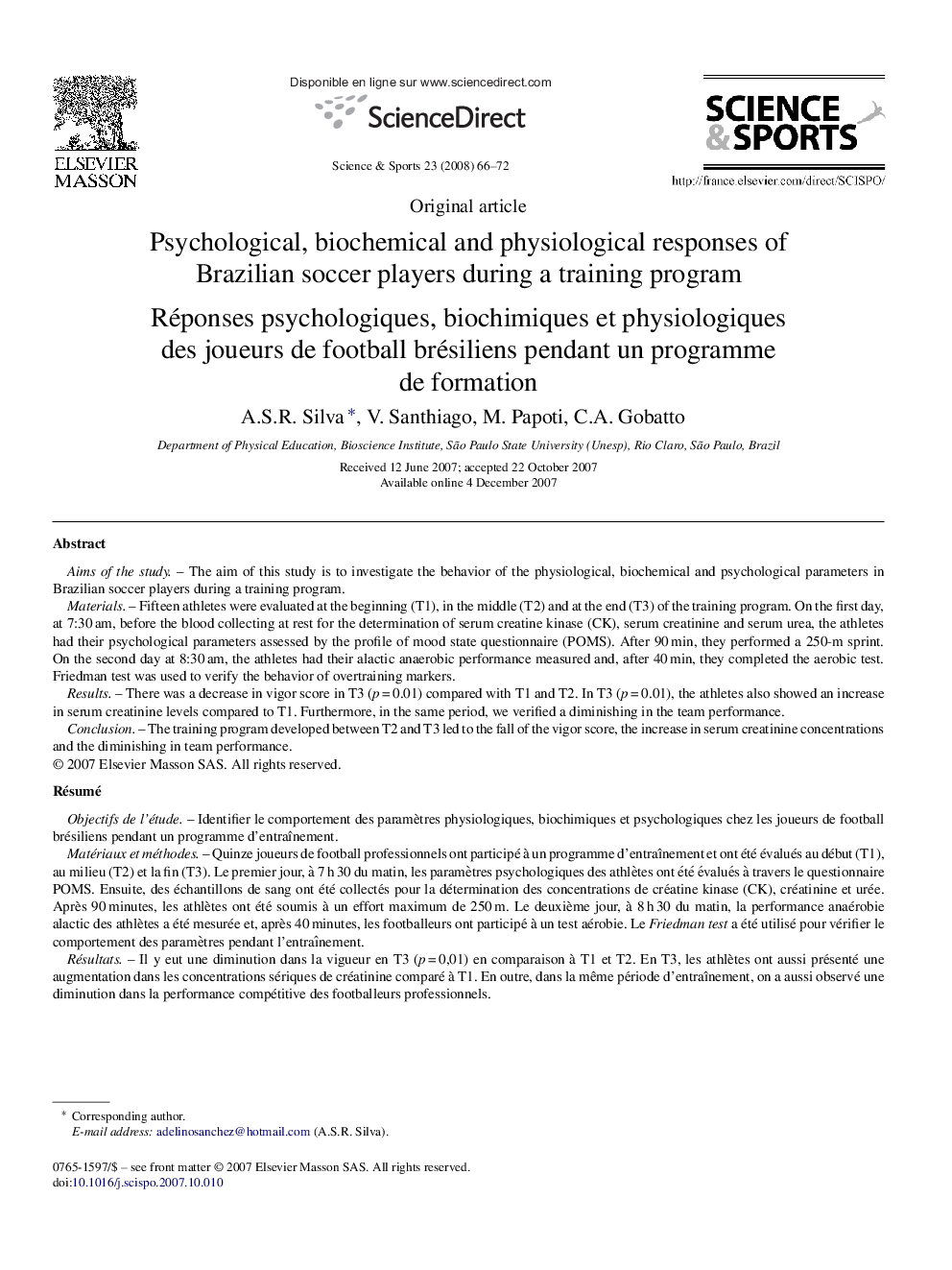| کد مقاله | کد نشریه | سال انتشار | مقاله انگلیسی | نسخه تمام متن |
|---|---|---|---|---|
| 4093323 | 1268301 | 2008 | 7 صفحه PDF | دانلود رایگان |

Aims of the studyThe aim of this study is to investigate the behavior of the physiological, biochemical and psychological parameters in Brazilian soccer players during a training program.MaterialsFifteen athletes were evaluated at the beginning (T1), in the middle (T2) and at the end (T3) of the training program. On the first day, at 7:30 am, before the blood collecting at rest for the determination of serum creatine kinase (CK), serum creatinine and serum urea, the athletes had their psychological parameters assessed by the profile of mood state questionnaire (POMS). After 90 min, they performed a 250-m sprint. On the second day at 8:30 am, the athletes had their alactic anaerobic performance measured and, after 40 min, they completed the aerobic test. Friedman test was used to verify the behavior of overtraining markers.ResultsThere was a decrease in vigor score in T3 (p = 0.01) compared with T1 and T2. In T3 (p = 0.01), the athletes also showed an increase in serum creatinine levels compared to T1. Furthermore, in the same period, we verified a diminishing in the team performance.ConclusionThe training program developed between T2 and T3 led to the fall of the vigor score, the increase in serum creatinine concentrations and the diminishing in team performance.
RésuméObjectifs de l’étudeIdentifier le comportement des paramètres physiologiques, biochimiques et psychologiques chez les joueurs de football brésiliens pendant un programme d’entraînement.Matériaux et méthodesQuinze joueurs de football professionnels ont participé à un programme d’entraînement et ont été évalués au début (T1), au milieu (T2) et la fin (T3). Le premier jour, à 7 h 30 du matin, les paramètres psychologiques des athlètes ont été évalués à travers le questionnaire POMS. Ensuite, des échantillons de sang ont été collectés pour la détermination des concentrations de créatine kinase (CK), créatinine et urée. Après 90 minutes, les athlètes ont été soumis à un effort maximum de 250 m. Le deuxième jour, à 8 h 30 du matin, la performance anaérobie alactic des athlètes a été mesurée et, après 40 minutes, les footballeurs ont participé à un test aérobie. Le Friedman test a été utilisé pour vérifier le comportement des paramètres pendant l’entraînement.RésultatsIl y eut une diminution dans la vigueur en T3 (p = 0,01) en comparaison à T1 et T2. En T3, les athlètes ont aussi présenté une augmentation dans les concentrations sériques de créatinine comparé à T1. En outre, dans la même période d’entraînement, on a aussi observé une diminution dans la performance compétitive des footballeurs professionnels.ConclusionLe programme d’entraînement développé entre T2 et T3 a induit la diminution de la vigueur, l’augmentation des concentrations de créatine et la diminution de la performance compétitive.
Journal: Science & Sports - Volume 23, Issue 2, April 2008, Pages 66–72